Razor bumps, medically known as pseudofolliculitis barbae, are common. The condition is caused by shaving, which causes curly hair to grow back into the skin. Razor bumps most often affect men and women with coarse or curly hair.
While You can treat the bumps with prescription medications, there are also a few over-the-counter (OTC) remedies that can be effective. Here we will tell you about the five best OTC remedies for razor bumps and why they work.
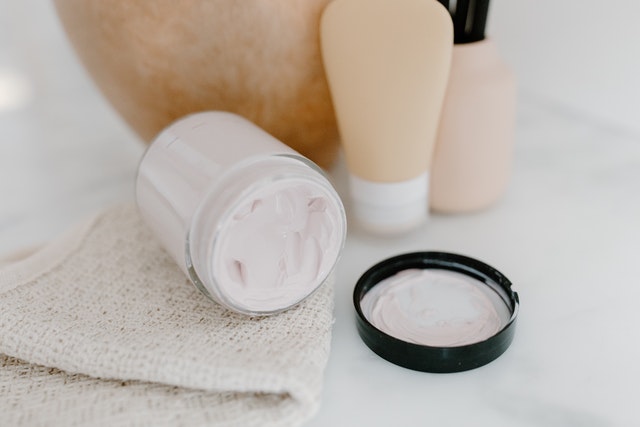
Since ancient times, Aloe Vera has been used for various skin conditions because of its numerous benefits. Aloe vera gel is naturally:
One of the best treatments for razor bumps at home is pure aloe vera gel or products made with natural aloe vera. These products can help reduce the appearance of razor bumps and provide instant relief.
Witch hazel is an all-natural astringent and antiseptic made from the bark and leaves of the Hamamelis virginiana plant. Native Americans used witch hazel medicinally for ailments, including colds, infections, and liver conditions. Today, you can see benefits for yourself by using witch hazel on various skin conditions, including razor bumps.
Razor bumps are caused when hair grows back into the skin after being shaved. That creates inflammation, redness, and itching in the epidermis. Witch hazel soothes and calms the skin. Meanwhile, its anti-inflammatory properties reduce redness and swelling from razor bumps.
Witch hazel products are great to always have on hand if you frequently experience mild to moderate razor bumps. For more serious cases of razor bumps, you might need to check with a physician before applying any topical treatment.
Tea tree oil is a natural remedy that you can use to treat razor bumps at home. With razor bumps, the hair follicles become irritated. Tea tree oil has antiseptic and anti-inflammatory properties that can calm folliculitis symptoms.
There is another reason to consider tea tree oil or products containing tea tree oil after shaving. Razors often cause tiny nicks and cuts on the skin. Tea tree oil may help prevent infection because it is believed to be antibacterial.
You can buy tea tree oil at most drugstores or online. Apply a few drops of oil directly to the affected area, and massage it gently. Do this two or three times a day until the razor bumps have disappeared. If you are using tea tree oil for the first time, start by applying a small amount to a test area to check for sensitivity. You can also add tea tree oil to a bath or shower.
Salicylic acid is a beta-hydroxy acid that works by breaking down the cells in the outer layer of the skin. It leads to the shedding of dead skin cells and helps unclog pores.
Salicylic acid is a topical medicine used to treat acne, psoriasis, calluses, corns, warts, and other skin conditions. Salicylic acid is available OTC without a prescription in up to 2% concentrations.
Benzoyl peroxide is an active ingredient found in many OTC acne medications. It is also the key ingredient in many razor bump treatments. It also breaks down keratin cells in the outer skin layers, causing dead skin to peel off. That opens and exposes ingrown hair cysts, which helps dry and heal them.
Benzoyl peroxide helps unblock pores, which can help prevent and treat razor bumps.
There are many benzoyl peroxide-based treatments available for razor bumps. Some are available as creams, gels, or washes. Others are available as ointments or lotions. Choose the one that works best for you.
Although razor bumps are a common problem for men and women who shave, you don’t have to live with them. For a mild case, try an over-the-counter treatment for razor bumps to reduce itching and minimize redness.
If you try these OTC treatments but don’t see improvement, talk with one of our expert doctors. Razor Bumps, Inc. offers video consultations with expert doctors to treat razor bumps. We will help you get rid of those pesky razor bumps for good!
We know that razor bumps can be embarrassing and frustrating. Let us help you get rid of them for good. We offer a video consultation with a doctor who can help you get your confidence back.
Contact us now for your low-cost appointment that your insurance may cover!
Disclaimer: The contents of this article are for informational purposes only and do not constitute medical advice. The information, graphics, and images on this site are not intended to substitute diagnosis or treatment by a medical professional. Always seek the advice of a licensed physician for any questions you may have regarding a specific condition.
“Aloe Vera”. bcm.edu. Accessed June 3, 2022.
“Benzoyl Peroxide”. ncbi.nlm.nih.gov. Accessed June 3, 2022.
“Salicylic Acid”. medlineplus.gov. Accessed June 3, 2022.
“Tea Tree Oil”. mayoclinic.org. Accessed June 3, 2022.
“Witch Hazel”. drugs.com. Accessed June 3, 2022.
You think you’ve just finished shaving your pubic area, but you notice something. It’s red, itchy, and painful. You have a razor bump in your pubic area.
Razor bumps are common for many people who shave the sensitive skin of their genitals, so if you’re dealing with them, don’t beat yourself up about it. If you get a case of razor bumps around the pubic area, you can treat it right away and take steps to prevent future razor bumps.
Here’s how to treat razor bumps in the pubic area once they pop up (and how to prevent them in the first place).
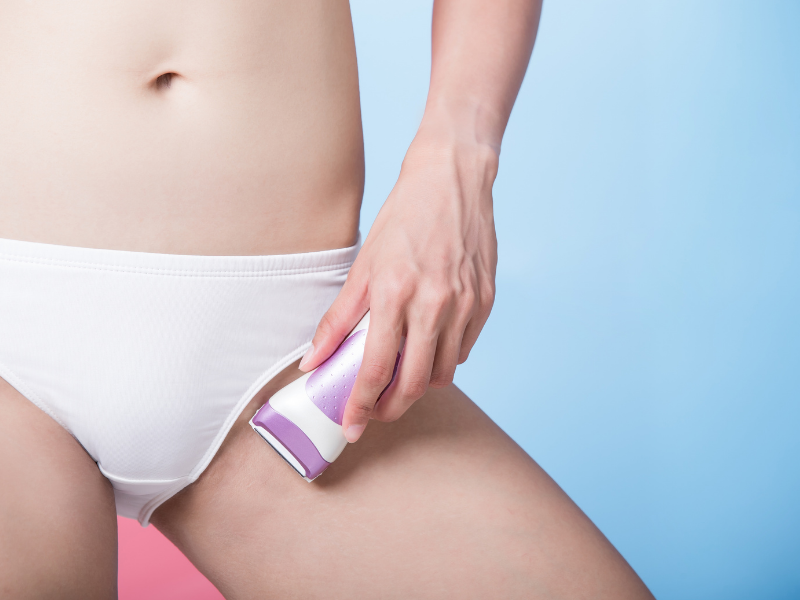
Razor bumps are small, red bumps that can appear after shaving. They’re called “razor bumps” because ingrown hairs from shaving cause them. These bumps develop when hair shafts become trapped beneath the skin’s surface. Ingrown hairs can be painful, itchy, and embarrassing, especially in a sensitive area like your pubic region!
Yes! If you’ve ever shaved or waxed the areas around your genitals, you’re at risk of getting razor bumps. The good news is that if you follow these tips for preventing razor bumps in the future, they’ll be less likely to appear on your body again.
These tips will help keep your skin in good condition and hopefully prevent problems from razor bumps.
If you already notice a red, bumpy rash on your skin, it is too late for prevention. It’s time to focus on treatment.
Make sure to wash the area gently with warm water and soap each day. That will help to cleanse your skin and prevent infection.
Apply a topical cream that soothes razor burn or ingrown hairs, such as aloe vera gel or witch hazel solution.
Apply a warm compress to the affected area for 10 minutes, up to three times per day, to increase blood flow to the area.
If your symptoms don’t go away or become worse, talk to a doctor about other treatments or prescription medications.
If you get razor bumps, treat them right away and take steps to prevent them from coming back.
Razor bumps are no fun, but they’re also nothing to be embarrassed about. Lots of people get them, and you can take steps to prevent them and treat them. Now that you know how razor bumps form and some tips for getting rid of them, give the methods we covered a try!
If you try to relieve razor bumps on your own, but they won’t go away, it’s time to talk to a medical professional.
If razor bumps have you bothered and you want to talk to an online doctor, Razor Bumps, Inc.’s board-certified physicians are available now through easy virtual video visits. Find out more by chatting with us now.
Disclaimer: The contents of this article are for informational purposes only and do not constitute medical advice. The information, graphics, and images on this site are not intended to substitute diagnosis or treatment by a medical professional. Always seek the advice of a licensed physician for any questions you may have regarding a specific condition.
Razor bumps can be a bother. When they show up, you want them gone fast.
Also known as pseudofolliculitis barbae, razor bumps are small red bumps that can occur after shaving. They make your skin look bumpy and feel irritated. When left alone to heal and given proper skincare, razor bumps typically last for about 2-3 weeks. However, severe cases can go on for months.
Razor bumps are a common problem for men who shave their faces regularly, but they can affect women too. In this article, we’ll take a look at what razor bumps are, how to get rid of them, how long they last, and most importantly: how to prevent them from popping up in the first place. Read on to learn more!
After shaving, you may have seen these bumps on your face or neck and wondered how long they’d last. Razor bumps can be frustrating. These ingrown hairs can range from mildly irritating to extremely painful and unsightly.
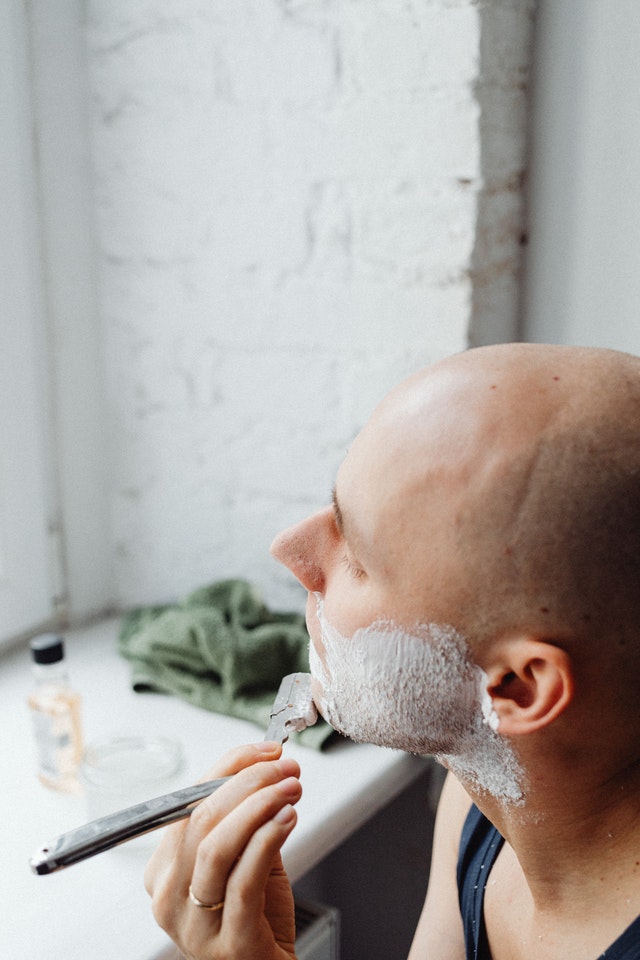
Razor bumps are caused by ingrown hairs (also called pseudofolliculitis barbae), which develop when hair shaves off unevenly and curls back into the skin instead of growing out the way it should. Mild cases of razor bumps will resolve in one to two weeks. Unfortunately, more severe cases may take much longer to heal. Sometimes, razor bumps cause permanent scarring that does not go away. The resulting irritation looks like small pimples that don’t go away with time or regular cleaning.
Luckily there are steps you can take to reduce razor bumps.
If you want to prevent razor bumps, here’s what you need to know:
Folliculitis is a skin condition resulting from ingrown hairs. It’s caused by shaving, which damages your hair follicles, making it easier for bacteria to grow inside them and cause inflammation.
Ingrown hairs are common in the armpits, groin area and face due to these areas being shaved most often. The inflammation and redness present on the skin may last for up to two weeks until the hair falls out or grows back in its natural direction, which will leave you feeling smooth again!
Common causes of razor bumps include shaving too close to the skin and using blades that cut too closely. Razor bumps can also result from shaving in the direction the hair grows. Shaving in this way leaves behind tiny hairs, which then become ingrown hairs when you attempt to push them back out through subsequent shaves. To avoid this, try shaving in the opposite direction of your hair growth (against it).
When it comes to how long razor bumps last and how they’re treated, there are a few factors at play:
If you take care of your skin and protect it from further injury, razor bumps will heal in 2-3 weeks.
You can prevent razor bumps by selecting the right razor and using proper shaving techniques.
The best method is shaving in the direction of hair growth. Avoid using dull razor blades with too much pressure or shaving in one direction without changing your angle after every stroke.
You should also leave your hair alone for long periods to avoid irritation. Trimming or shaving only when necessary will also help reduce irritation by preventing overgrowth of ingrown hairs and keeping the area from becoming irritated from constant grooming.
As you can see, there are many ways to prevent razor bumps from happening. If you follow these tips and strategies, you will be able to avoid razor bumps with ease.
It is important to note that every person’s skin is different, and what works for one may not work for another. You should try out different methods to find one that works best with your skin type and hair texture.
The best treatment for razor bumps is exfoliation and pushing hairs out of the skin through trimming or shaving only when necessary.
Exfoliating your skin will help remove dead skin cells that can irritate and reduce ingrown hairs.
Try using an over-the-counter exfoliant cream for sensitive skin.
If razor bumps persist, you need to talk to a doctor about your skin condition.
You can avoid razor bumps if you’re conscious of how you shave.
Hopefully, you better understand razor bumps and what to do about them. To keep razor bumps from sticking around for two to three weeks, you should try to prevent them altogether. Be sure to follow these simple steps for a safe shave.
Disclaimer: The contents of this article are for informational purposes only and do not constitute medical advice. The information, graphics, and images on this site are not intended to substitute diagnosis or treatment by a medical professional. Always seek the advice of a licensed physician for any questions you may have regarding a specific condition.
Spring break is just around the corner. Soon it will be time to strip off the winter layers and bare your skin to the sun. But for some men and women, shaving the thighs or abdomen brings to mind bothersome razor bumps.
If shaving your bikini line causes skin irritation, you are not alone. Razor bumps are a common condition. The good news is you can take steps this spring to avoid bikini line razor bumps. Here’s how to get a bathing suit ready with the smooth shave you want.
Here are some steps you can take to get a silky bikini shave, without those pesky razor bumps.

First, it is important to understand why razor bumps show up along the bikini line. The hair along the bikini line is usually coarse and curly. This type of hair tends to curve as it grows. After shaving, sharpened hair tips can turn and grow right back into the skin. An ingrown hair, or multiple ingrown hairs, can result within 24-48 hours of shaving. That causes what appears as swollen, sensitive bumps on the bikini line.
Many women notice bumpy areas on their inner thighs and abdomen after shaving. If you've experienced this, here are some tips to up your shaving game to avoid bikini line razor bumps.
After shaving, consider using a topical skin treatment to soothe the skin and reduce irritation. Witch hazel and aloe vera are all-natural, over-the-counter products that are known for being anti-inflammatory and antiseptic. In other words, they calm skin and reduce bacteria. Use a cotton ball to apply these or other products to the affected skin.
“When trauma occurs to your skin, it reacts by becoming inflamed and bumpy,” explains dermatologist Dr. Mona Gohara, MD.
If you already have a case of razor bumps in your bikini area, it’s not too late. Here are some tips for dealing with skin irritation after shaving.
In some cases, razor bumps on the bikini line can become serious. If your razor bumps become worse over time, don’t go away, or are accompanied by other symptoms such as severe pain or are interfering with your daily activities, it might be time to talk to a doctor.
Now you know how to avoid or get rid of those unsightly and uncomfortable bumps from shaving. Even though the bikini line is a high-risk area for razor bumps, you can get the smooth shave you want with a little extra effort. Try these tips at home and be ready for your spring break out.
If razor bumps have you bothered and you want to talk to an online doctor, Razor Bumps, Inc.’s board-certified physicians are available now through easy virtual video visits. Find out more by chatting with us now.
Disclaimer: The contents of this article are for informational purposes only and do not constitute medical advice. The information, graphics, and images on this site are not intended to substitute diagnosis or treatment by a medical professional. Always seek the advice of a licensed physician for any questions you may have regarding a specific condition.
Have you ever noticed a rash on your legs after shaving? If so, it could have been razor bumps. So, what do razor bumps look like on the legs?
Razor bumps on the legs look like small pimples or ingrown hairs. It is important to differentiate between razor bumps and bumps that appear after shaving. Razor bumps is a true medical condition formally known as pseudofolliculitis barbae. Bumps that show up as a rash on the legs after shaving could be something else. What some people refer to as razor bumps, actually aren't.
There are also a few other bumpy skin conditions associated with shaving. Razor bumps are more common in some parts of the body and certain skin types. If you see something that looks like razor bumps, here’s what you need to know.
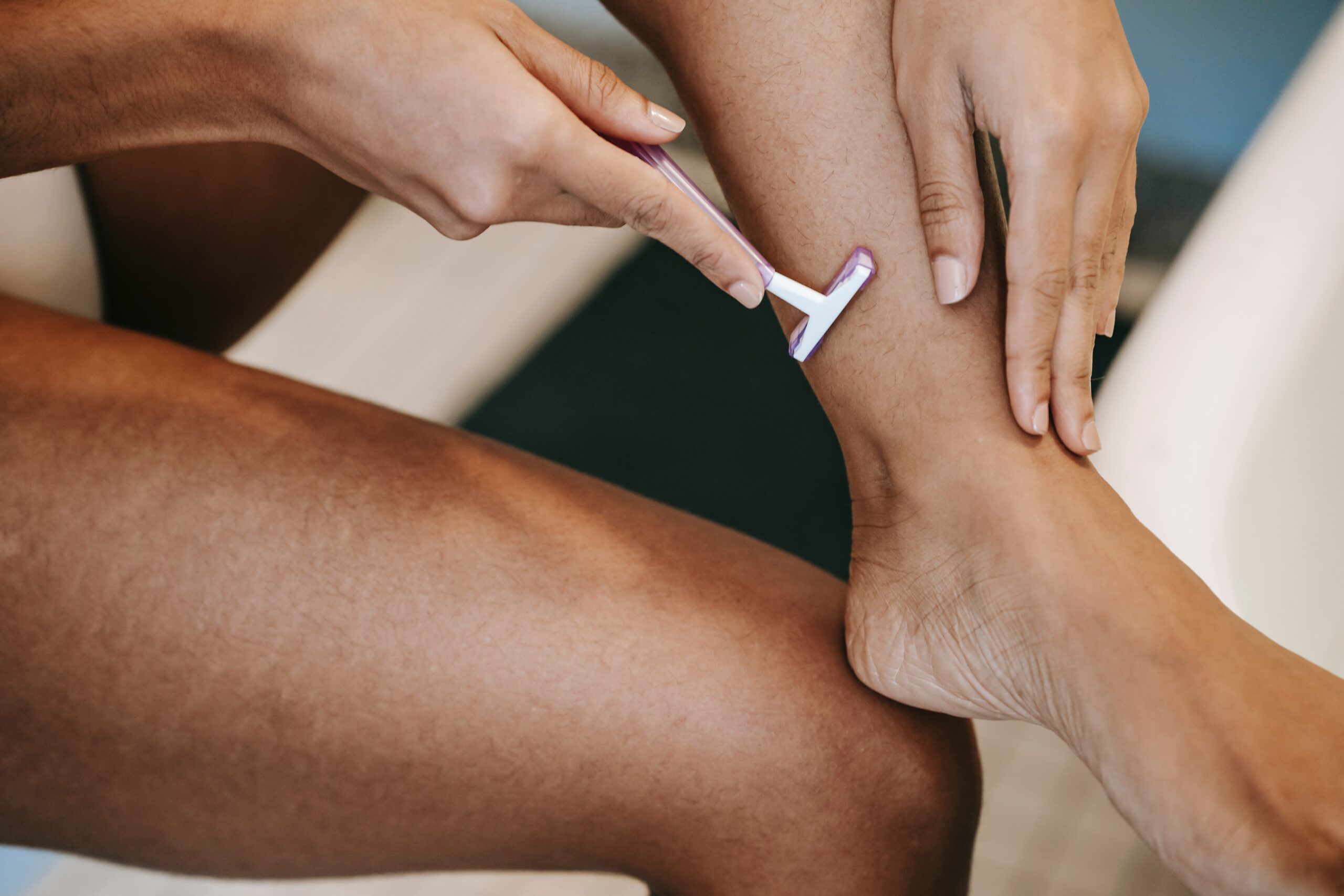
Shaving often irritates the skin. As a result, it can cause problems, such as razor bumps. Razor bumps on the legs might look pink or red. And they are often swollen.
The medical term for razor bumps is pseudofolliculitis barbae. In particular, it is caused by hairs cut by a razor with a pointy or jagged edge, like a tiny knife. Sometimes, these short, coarse, curly hairs curl and grow back into the skin. In other words, razor bumps are a type of ingrown hair. Only a medical professional licensed to diagnose and treat conditions can tell for sure if it's razor bumps.
Razor bumps usually appear 24-48 hours after shaving. The good news is that razor bumps typically do not appear on the legs. Razor bumps usually cause ingrown hairs on the face and neck for two reasons:
An exception, though, is the upper thigh and groin area. This area is more likely to be affected by true razor bumps. That is because hairs in these regions are likely to be thicker and wavy or curly.
Bumps on the legs after shaving that are not located in the thigh or groin area are probably not razor bumps. They could be another skin condition.
Bumps on the lower legs after shaving might be razor burn. Razor burn is another type of rash that looks like small red bumps. But it is not caused by ingrown hairs. So, it usually shows up in only a few hours after shaving.
Razor burn is usually not as serious as razor bumps and resolves on its own quickly. It is caused by skin irritation related to the razor, shaving products, or just the shaving method. While it causes a burning sensation and looks bad, it usually won’t cause any long-term damage.
Another reason you might have bumps on your legs after shaving is an irritation caused by the razor or the shaving cream. Skin sensitivities can show up as a rash. topics/sensitive-skin" rel="noreferrer noopener">Itching is a good sign that someone might have skin sensitivity.
Folliculitis is another condition that could cause bumps on the legs after shaving. A hair follicle is a pocket in the skin where the hair root grows. Folliculitis is an inflamed, irritated, or infected hair follicle.
Sometimes the skin pocket or hair follicle is injured through shaving. When bacteria enter the hair follicle, it can cause infection.
Folliculitis, skin sensitivities, and razor burn are three conditions that might look like razor bumps. People often refer to them as razor bumps because they cause spots on the skin, usually after shaving. But each condition has a different cause, so they are treated differently.
So how can you tell what the rash on your leg is?
These are four skin problems that commonly appear on the legs. If you noticed bumps from shaving on your legs and are unsure if you have razor bumps or something else, talk to a doctor about it. A virtual physician can look at your skin through a secure video visit and make recommendations to help you treat the problem. They can help you clear up your skin in no time, and you can say goodbye to unattractive bumps on your legs.
Have you experienced problems from shaving for your job? If razor bumps have you worried, you need to talk to one of our doctors. Meet a top board-certified physician online through a convenient virtual video visit. Find out more by chatting with us now.
Disclaimer: The contents of this article are for informational purposes only and do not constitute medical advice. The information, graphics, and images on this site are not intended to substitute diagnosis or treatment by a medical professional. Always seek the advice of a licensed physician for any questions you may have regarding a specific condition.
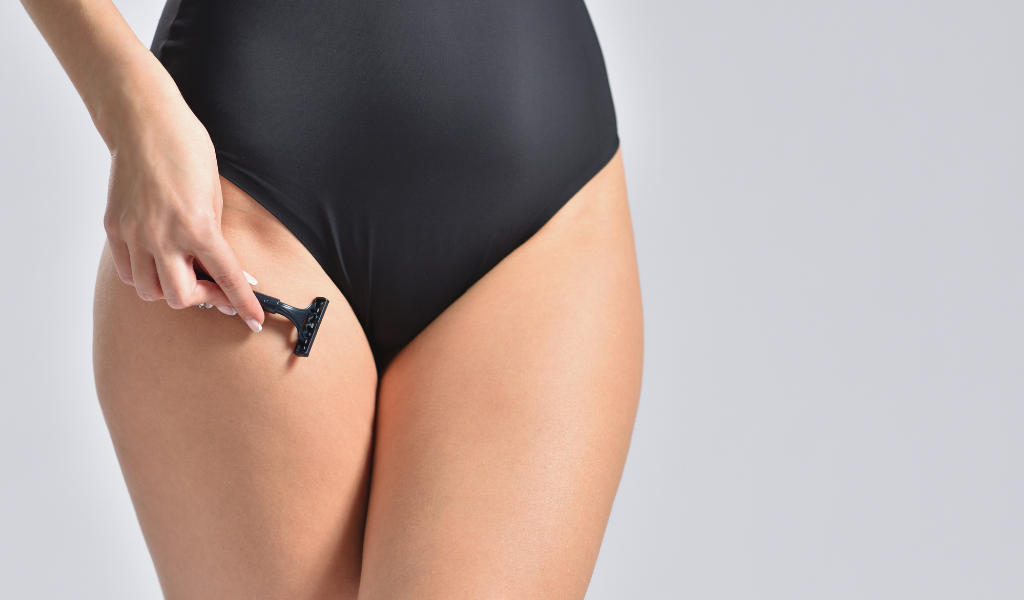
Bumps on the bikini line after shaving are common. Razor bumps happen when irritated hair follicles become swollen, itchy, or even infected after hair removal.
To avoid bikini line bumps, it is important to know what causes them. Then, taking special care to protect the skin can go a long way in preventing problems. In most cases, bikini line bumps are bothersome but harmless.
Here are some tips to stop this skin care problem and what to do when it becomes serious.
The bikini area refers to the skin and hair next to the genitals. These areas are bared when wearing a bikini. For looks and comfort, many women choose to shave or wax there.
Pubic hair removal is common. About 83% of women report grooming their bikini areas. Understanding hair growth in this area is the first step to preventing skin problems.
Although most women admit trying to eliminate some (or all) of the hair in the bikini area, it is there for a couple of reasons, such as:
Shaving around the genitals can lead to ingrown hairs, skin infections, even painful cuts or burns. Hair removal can seriously irritate a bikini line. So it is important to consider the risks and benefits when choosing how to care for this delicate area.
Individuals choose hair removal for many reasons, some cultural or even religious. When deciding to remove hair at the bikini line, these steps can help maintain healthy, good-looking skin.
Make these steps a part of the skin care regimen and you could see better results.
With these tips on prevention and a newfound understanding of why razor bumps start, you can avoid bikini line bumps now and forever.
And if you can't, talk with one of our board-certified physicians about what else you can do to eliminate his problem.
To talk with one of the top board-certified physicians, book an appointment now. Our caring experts can help answer your skin questions.
Disclaimer: This article is for informational purposes only. It does not constitute medical advice. The information, graphics, and images on this site are not intended to substitute diagnosis or treatment by a medical professional. Always seek the advice of a licensed physician for any questions you may have regarding a specific condition.

Many women enjoy the feel of soft-shaven skin. But the red, itchy patches that come after can be a real pain. Razor bumps in sensitive areas like the bikini line are annoying. So how can men and women deal with razor bumps down there?
Razor bumps, technically called pseudofolliculitis barbae, are a common skin complaint. Fortunately, they are preventable to some degree. By protecting skin before, during, and after hair removal, men and women can minimize the effects of razor bumps.
If you're wondering how to save your skin, check out these tips to steer clear of painful razor bumps.

Razor bumps are an uncomfortable sign of skin irritation. For those who already have them, the first step is to keep them from getting worse.
A compress made with salt water can also help soothe the skin. Saltwater cleans and heals the skin by osmosis. To make a "saline soak" at home:
Consider adding a couple of drops of an essential oil, like tea tree oil, to the saline solution for more relief.
When bumps don't go away or become more painful, it may be best to see a doctor.
A physician can tell if the problem is razor bumps or may be something else. Some doctors use antibiotic gels, steroids, or retinoids to treat severe cases.
They say an ounce of prevention is worth a pound of cure. When it comes to razor bumps, it's very true.
Here's how you can lower your risk of getting razor bumps from shaving.
Find more tips on how to prevent razor bumps here.
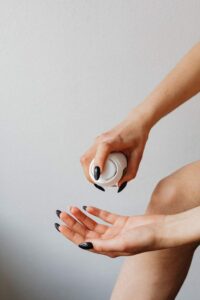
Taking care of skin before, during, and after hair removal can go a long way in preventing razor bumps.
If you've tried to treat pseudofolliculitis barbae yourself but find the situation getting worse, it may be time to check with a doctor.
Are you looking for a doctor near you to treat your sensitive issues? My Virtual Physician has board-certified physicians who can address gynecological and primary care problems via video visits.
If you would like to talk with a board-certified doctor, you can schedule your appointment online now. My Virtual Physician offers health screening, lab tests, and counseling to meet all of your healthcare needs.